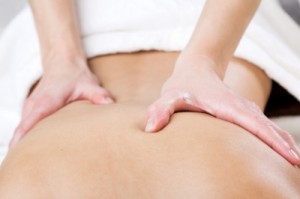By Caroline Heaney
Recovery has reportedly become a ‘hot topic’ at the 2015 Rugby World Cup. Competing in a major tournament such as the Rugby World Cup can take its toll on the body. Rugby is a physically demanding sport that fatigues the body, so it’s important for players to be able to recover effectively and bounce back ready for the next match. Teams that reach the final of the Rugby World Cup will have played seven matches and that can be tough for the body to cope with, even amongst elite athletes. Although both teams in the final will have played the same number of games, they may not have had the same experience. One team, for example, will have an extra day of rest since the two semi-finals are played on consecutive days. Additionally, one team may have a more gruelling semi-final than the other which could give their opposition an advantage. How well they recover from that gruelling match could make all the difference to the result. A lack of adequate recovery was reported to be an influencing factor in Japan’s defeat at the hands of Scotland after such a spectacular opening match against South Africa. Consequently sports performers often employ recovery strategies to speed up and maximise their recovery between matches. In this article we will review three commonly used strategies: cryotherapy, compression clothing and massage.
Cryotherapy
Cryotherapy can be defined as the lowering of tissue temperature in order to achieve a therapeutic objective (in this case to enhance recovery). There are various modes of cryotherapy, but ice baths were traditionally the most common mode used by athletes, however increasingly whole body cryotherapy is being used. Whole body cryotherapy (WBC) is where athletes are exposed to very low temperature rooms or chambers. Cryotherapy is openly used by elite rugby players. The Wales team, for example, were using cryotherapy in preparation for last World Cup in 2011 and reportedly stepped into a cryotherapy chamber soon after their victory over England on 26th September.
Cryotherapy is thought to reduce some of the negative symptoms associated with intensive exercise such as muscle soreness and inflammation, and increase waste transportation, but what evidence is there to support this? It would appear not a huge amount. A recent review found only limited evidence to support WBC as a recovery tool and concluded that it may make no difference to muscle soreness or even make the pain worse. Interestingly, when questioned on this a spokesperson from Welsh Rugby stated that despite the lack of evidence they continue to use it because they “think it works”. This indicates the importance of belief in a treatment and the potential for the placebo effect to influence recovery when using cryotherapy.
Compression clothing
Compression garments are the items of tight clothing worn by athletes that have highly elastic properties which provide compression. These garments have become commonplace in rugby, but what is the theory behind them and why are they thought to aid recovery? It is logical to assume that compression is beneficial to recovery due to some of its other uses e.g. in the treatment of sports injuries or the use of flight socks to avoid developing deep vein thrombosis. Compression garments are suggested to enhance recovery by reducing the swelling and inflammation that occurs in response to intensive exercise. The theory is that the compression creates an external pressure gradient thus minimising the space available for swelling, but what does the research evidence show?
In their meta-analysis of 12 compression garment studies Hill et al. (2014) concluded that there is evidence that compression garments are moderately effective in enhancing recovery from exercise induced muscle damage. So it would seem that there is some value to using compression garments to aid recovery.
Massage
Massage is commonly used by rugby players to enhance their recovery between matches, for example, the England rugby team use massage as an integral part of their recovery and match preparation. Whilst massage is a well established recovery strategy, there is a surprising lack of scientific evidence to support its use. Brummitt (2008) in his review of the literature concluded that the research has failed to show that massage has a significant impact on delayed onset muscle soreness (DOMS) or other measures of recovery. More recently, after reviewing the literature, Nelson (2013) concluded that massage has a promising role to play in reducing DOMS, but urged caution due to the variability in study methodology. This identifies one of the key issues that has stunted massage research – individual differences. Each massage therapist develops their own individual massage style, making comparisons between therapists problematic. Additionally, factors such as the depth of pressure applied, muscle groups involved, ambient temperature, and time of day may all affect the impact of a massage. Consequently, it appears that what is lacking from the body of research evidence is guidance on what techniques, timings and dosages are optimal for recovery.
Conclusion
It is likely that players in the Rugby World Cup will be engaging in a wide variety of recovery strategies during the tournament, including, but not limited those outlined in this article. While the scientific evidence to support these strategies is still relatively limited, they are widely adopted by players and players appear to believe that they are effective. This is perhaps the most important factor of all – if an athlete believes that a strategy will help them recover, they will feel more confident going into their next game and that can only be a good thing.
The science behind recovery strategies in sport will be covered in a new OU Sport and Fitness level 3 module coming soon.
For more Rugby World Cup related articles, visit the OpenLearn Rugby World Cup Hub.

